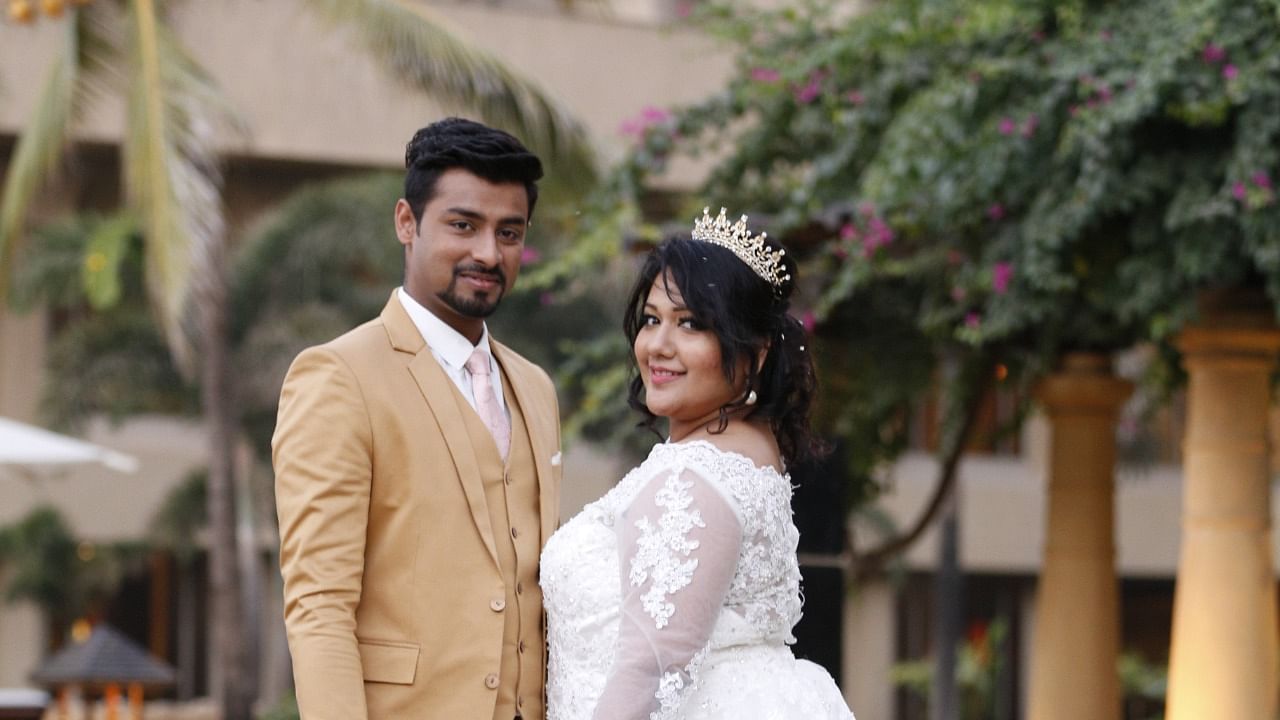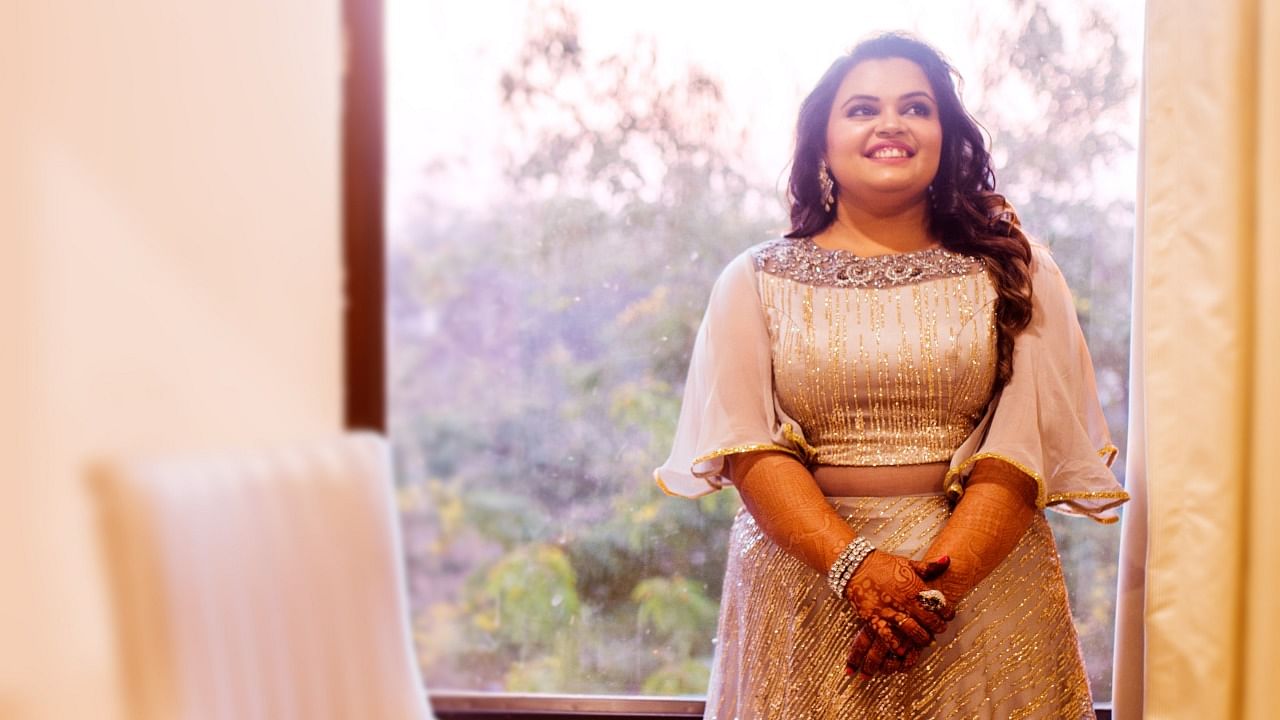

"Don't take such a small blouse. Your tummy is pretty big"—this was one of the many slights Diksha Singhi had to weather while shopping for her trousseau in Delhi for her wedding recently. The digital creator, who goes by "alwaysalittleextra" on Instagram, is well-loved by over 66,000 followers online for her body-positive content. But the bridal market offline did not greet her as agreeably.
While many local designers turned her away, not willing to put effort into dressing a plus-size bride, many others that relented didn't do so without airs that suggested they were doing her a favour.
"Many places said, at least hum aapka size bana toh de rahe hai na (at least, we are making the outfit in your size)," Singhi told DH. Ultimately, her D-day lehenga came from Chandni Chowk, from a store she says charged her extra for her size yet didn't deliver to satisfaction.
Even today, big bodies aren't given enough space to stand with their slimmer peers in the dressing room. Is the market equally accessible to bodies that fit into conventional beauty standards and bodies that don't?
Tanvi Geetha Ravishankar, famous to over one lakh Instagram fans as "thechubbytwirler," tells us she had to design much of her trousseau by herself when she married in 2016.
"I was a pure plus-size bride and didn't have any options back then for bridal couture."
Brands are adapting to body-positive representation with luxury labels like Sabyasachi and Anita Dongre dressing a varied customer base. But Ravishankar complains their services cater largely to the XL-XXL population, which still blindsides a whole spectrum of big bodies.
"We still haven't seen a proper plus-size bride in the catalogue of any designer. I don't see anyone representing my body type," she says.
Celebrity stylist Divyak D'Souza, recently seen on the Discovery+ show "Say Yes to the Dress," where he assisted to-be brides in finding perfect fits, said the biggest challenge in dressing sizes 18 and above came from the way the bridal fashion ecosystem is set up.
"You want to wear your bridal outfit, see how it feels, and vet it to see if it's your vibe and style," said D'Souza to DH. "Designers don't keep samples in larger sizes, so plus-size brides don't have options to try on," he said.
The women often have to pick out from lookbook samples on size 8 or 10 girls and only be shown the final product dangerously close to zero hour.
The pandemic of body-shaming, meanwhile, thrives unrestrained in and around the wedding market. D'Souza says all the plus-size women he has dressed have complained of prejudice, with people—from relatives to dressmakers—generously advising them to size down.
"The idea of getting married is always used as an incentive to motivate them to lose weight. 'These pictures are forever,' brides are told," said D'Souza.
Top-end couture houses aren't as guiltless here as their upstanding campaigns would like us to believe. Last year, Dr Tanaya Narendra, better known as Dr Cuterus to over eight lakh followers, in a viral Instagram post called out a Tarun Tahiliani store in Delhi for allegedly body-shaming her. The designer apologised, citing the pandemic for their stores not carrying outfits in size 16.
The seemingly uncompromising mien of leading fashion labels is what turns many to-be brides towards locally tried-and-tested masterjis (local tailors). Content creator Meenu Goel Khade aka "shes_a_sixteen," on Instagram, tells us she was able to assemble her trousseau locally and within budget.
"There are brands that still charge extra for making outfits in bigger sizes. My wedding outfit was done by a Pune-based designer I had previously worked with. The process did not seem intimidating since I chose to go get maximum outfits tailor-made," she said.
Some like Ravishankar, who express a flair for designing their clothes, take it upon themselves to bring their bridal visions to life.
While the agreement is near-unanimous on small changes transpiring within the wedding fashion industry today, much honest work remains beyond the eyewash for women to trust they have equal space in the market.
Singhi would like to tell brands, "Just including four designs in your catalogue won't make you size-inclusive. We want the entire range to be inclusive and want sample designs in our sizes."
Meanwhile, the INDIAsize survey initiated by the National Institute of Fashion Technology (NIFT) and the Ministry of Textiles, which envisions a revised size chart for India through a national exercise, was launched last year. Given that much of our population falls outside standardised international size brackets, this is a massive step in the right direction towards acknowledging and celebrating Indian bodies.
(Tanvi Akhauri is a freelance journalist and features writer covering the arts and culture beat)